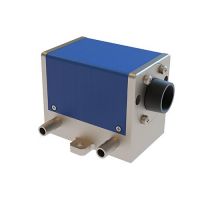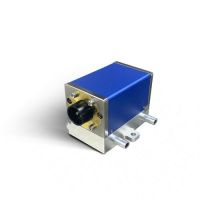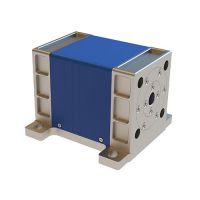Laser pumping is the process of energizing a medium in a laser to achieve a state known as population inversion. This state is essential for the generation of laser light. In simpler terms, laser pumping is like 'fueling' the laser with energy to make it work.

At the heart of laser pumping lies the concept of energy levels in atoms or molecules. When these particles absorb energy, they jump to higher energy states, known as excited states. The key to laser action is achieving more particles in these excited states than in the lower energy, or ground states – a condition called population inversion.
Stimulated emission is the next critical step. Here, an excited particle, upon encountering a photon (a particle of light) with the right energy, drops to a lower energy state, releasing a second photon identical to the first. This process amplifies light, leading to the coherent, monochromatic beam characteristic of lasers.
Diverse Techniques for Energizing Lasers: Laser pumping can be achieved through various methods, each with its unique mechanism:
Optical Pumping: This involves using light, often from another laser or a flashlamp, to excite the particles in the gain medium.
Electrical Pumping: Common in semiconductor lasers, this method uses an electric current to stimulate the laser medium.
Chemical Pumping: Less common, this technique involves initiating a chemical reaction to provide the necessary energy for the laser medium.
Each pumping method has its advantages and drawbacks. Optical pumping is versatile and widely used but can be less efficient due to mismatched wavelengths. Electrical pumping, on the other hand, is highly efficient for certain mediums like semiconductors but is limited in its application to specific types of lasers. Chemical pumping offers high energy outputs but is complex and less commonly employed due to its operational challenges.
Pumping in Action Across Laser Types Laser pumping finds its application across various types of lasers, each utilizing the concept uniquely:
In solid-state lasers, like Nd:YAG lasers, optical pumping is often employed. Flashlamps or Diode Lasers are used to excite the solid crystal medium.
Semiconductor lasers typically use electrical pumping. Here, the application of an electric current across a semiconductor junction creates the necessary population inversion.
Gas lasers, such as CO2 lasers, can be pumped electrically, where an electric discharge excites the gas molecules.
Efficiency and Output CorrelationThe efficiency of the pumping method directly impacts the laser's performance. Efficient pumping leads to a higher population inversion, translating to stronger and more stable laser output. Conversely, inefficient pumping not only reduces output power but can also lead to issues like excessive heat generation, impacting the laser's longevity and performance.
In conclusion, laser pumping is a foundational aspect of laser technology, with diverse methods catering to different types of lasers. The choice of pumping method significantly influences the efficiency and application of the laser, making it a critical consideration in laser design and operation
Fiber coupled Laser Diode : Defintion and Application as the Pump Source
Tackling Thermal Management Challenges in Semiconductor-Pumped Nd:YAG Systems
New Generation of Diode Pumped Laser Launched
 |  |  |
| CW Diode-Pumped Solid-state Laser | New Generation G2-A CW Diode Pumped Laser | QCW Diode-Pumped Solid-State Laser |
Contact: Lumispot
Phone: +86-15072320922
Tel: +86-510-87381808
Email: sales@lumispot.cn
Add: Bldg 4 No.99 Fu Rong 3rd Road, Wuxi, China